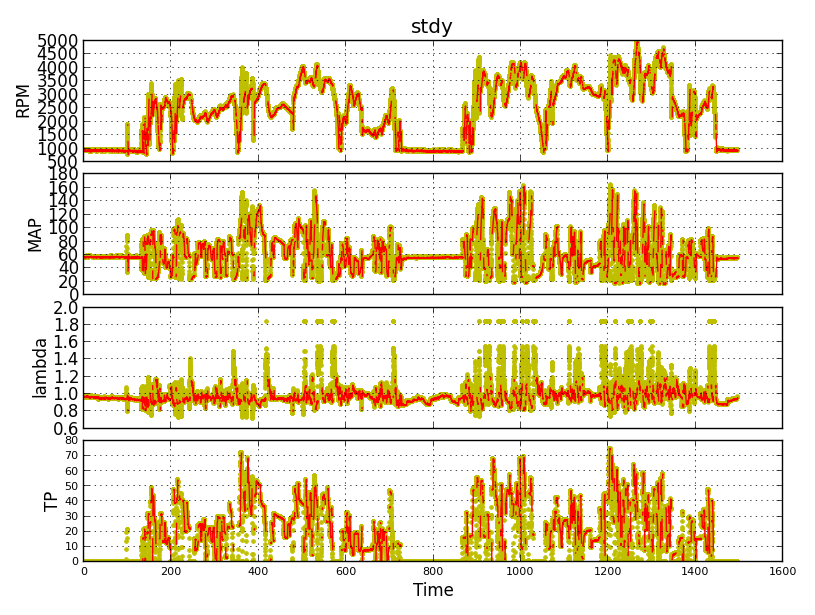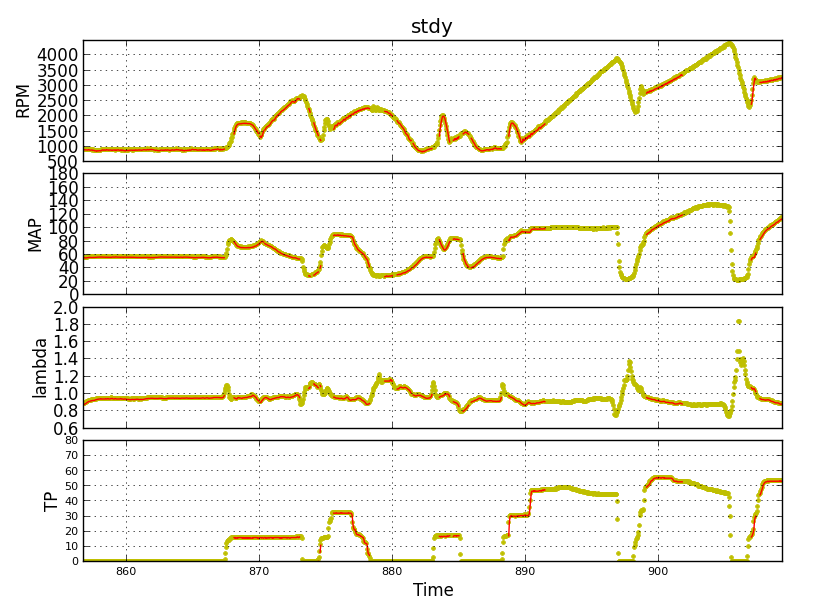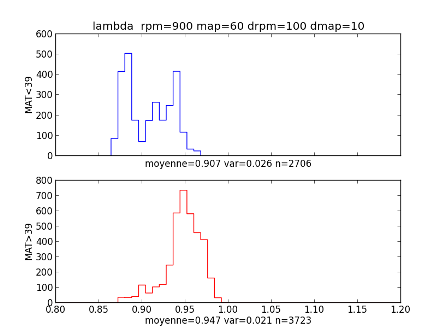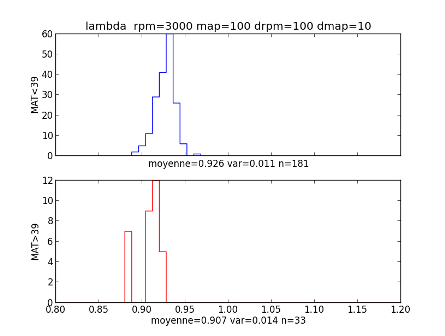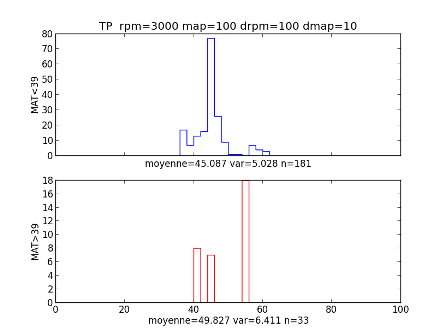Changes by last author:
Deleted:
|
----
September 2013 I have set aside the project I had to measure the acceleration/couple following each firing since the triggerlog data was not precise enough. I have to made a straight wav record of the trigger pulses. Instead I started to tune the injection and so I did some programs in order to calculate the lambda mean and standard deviation. This result is already given by some VT tools, but I have noticed that the results are not always consistent depending on the quality of the runs and besides, that one cannot parametrize the calculus. At the same time, I needed to know how to fill the VE Correction table(TPS,MAT), but this is my first car and my know how in the field is short. Here is what I got a) Steady run definition The red parts of the plots shows where the lambda mean would be calculated
and with a zoom
This is a first shot. Many parameters can be further tuned in the program to get rid of unwanted parts or unrelevant points (RPM variation, TP speed,etc) which have nothing to do with clean steady running b) Lambda versus MAT
These 2 histograms are done from the above steady parts of the vemlog, one compute CLT<39 the other one for CLT>39 The events are those for which 800<RP<1000, 50<MAP<70 This shows by how much the engine runs leaner at idle TP=0 when MAT is hot. What about 3000rpm?
Of course one want to know in both cases what was the TP value.
If someone is interested in Python programming, please tell. |
